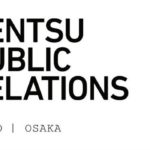NEXO SUV Model Set to Spearhead Acceleration of Hyundai’s Plans to Develop Low Emission Vehicles
It has been a busy start to the year for Hyundai‘s next-generation fuel cell vehicle NEXO, scheduled to be released in Korea next month.
Unveiled at CES 2018 as the technological flagship of Hyundai’s growing eco-vehicle portfolio, the NEXO SUV model is set to spearhead Hyundai’s plans to accelerate development of low emission vehicles. This is in line with Hyundai Motor Group’s renewed goal of introducing 38 eco-friendly models to global markets by 2025.
The brand’s all-new vehicle combines the practicality of an SUV with clean advanced fuel cell technology. The NEXO is capable of travelling 609 kilometres (on Korean certificate basis) on a single charge, a top among fuel cell-powered vehicles in the world.
This next generation vehicle offers some of the most advanced technology on the market with various advanced driver assistance systems and some of the strongest powertrains in the segment.
In early February, a fleet of Hyundai Motor’s next generation fuel cell electric vehicles succeeded in completing a self-driven 190 kilometers journey from Seoul to PyeongChang. This was the first time in the world that Level 4 autonomous driving had been achieved with fuel cell electric cars.. Previously these vehicles were only demonstrated at limited speeds on some sections of Korean roads.
Five Hyundai vehicles completed the journey. Three vehicles were based on Hyundai’s next-generation fuel cell electric NEXO SUVs and the other two were Genesis G80 autonomous vehicles. All vehicles were equipped with Level 4 self-driving technology, as defined by the SAE international standards, and 5G network technology. The vehicles used for the demonstration were “futuristic vehicles” that closely represent Hyundai’s three visions for future mobility: connected mobility, freedom in mobility and clean mobility.
These vehicles featured a number of advanced technologies that enabled them to recognise surrounding vehicles more accurately, make better judgments at junctions and at branching roads. The vehicles navigate through toll gates by accurately calculating the toll gate’s width and position, and precisely pinpointing the vehicle’s position on a map by using external sensors fitted for situations when the GPS signal was interrupted, such as going through long underground tunnels.
Throughout February, visitors to PyeongChang will have the opportunity to experience the brand’s world-first, next-generation self-driven fuel cell electric cars. All five vehicles that completed the world’s first journey will be available for visitors to experience around the urban roads of PyeongChang.
This is the first time in Korea that such technology has been deployed in public transport. In future, the brand will continue efforts to reinforce safety features for commercial vehicles including public transportation.
This demonstration brings Hyundai Motor Group, which includes flagship units Hyundai Motor and Kia Motors, a step closer to the commercialisation of the SAE standard Level 4 compliant autonomous-driving system in smart cities by 2021. Hyundai also plans to commercialise the technology for fully autonomous driving by 2030.
Hyundai was a two-time winner of the World Branding Awards, in the Automotive category.



Average Rating